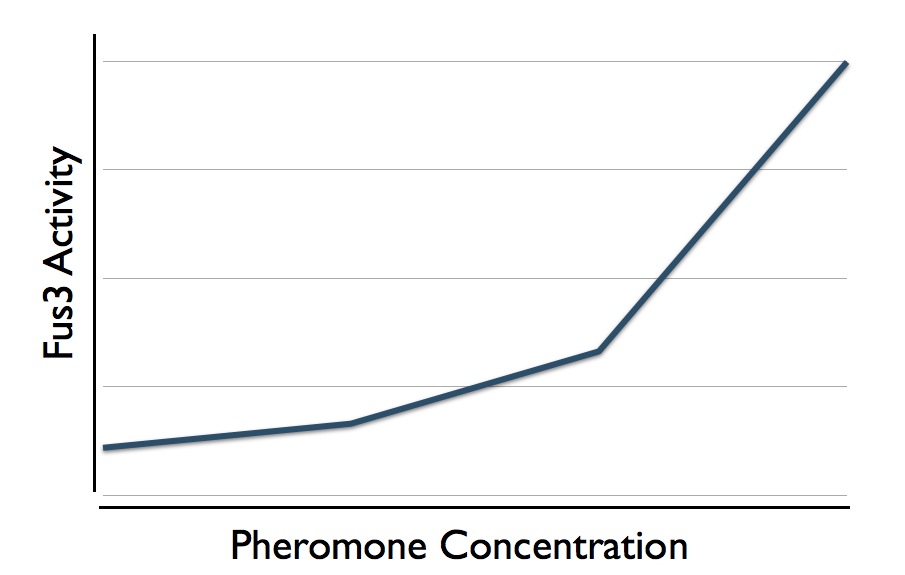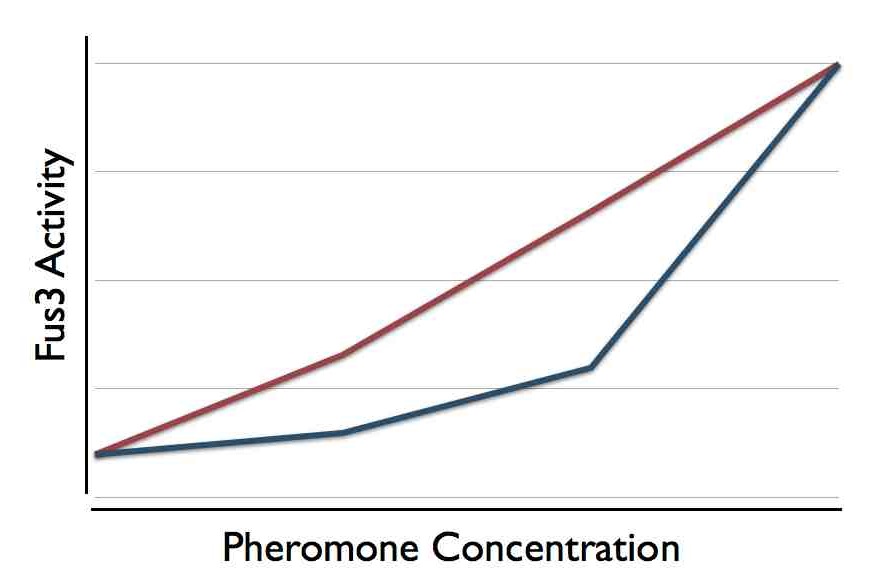One of the major challenges in molecular biology right now is to understand how different parts work together to produce the behavior of a cell. A cell can't really be explained by the biological equivalent of an organization chart - you can't say, "this protein does this, this other one over here does this, that one has this job..." That works for some functions, but many of the processes in a cell come about because of the way regulatory links are organized into feedback loops. This means that, when we look at the complex wiring of a cell's information processing machinery, our intuition will only take us so far. To really understand how things work, we need to make mathematical models, and we need to make careful biochemical measurements to test those models. This is the way to really understand how the whole of the cell is greater than its parts.
Writing in Molecular Cell, a group at the University of North Carolina has looked into the behavior of a protein called Fus3. Fus3 is at the bottom of a chain of signal-passing events that tell yeast cells that there is
a potential mating partner around. As you increase the amount of mating pheromone around a yeast cells, the Fus3 protein behaves like this:

Fus3 is acting almost like an all-or-none switch: as you increase pheromone levels, Fus3 activity still stays low, until suddenly at high levels Fus3 takes off. The UNC group showed that this behavior is essential for getting yeast to respond the right way to different levels of mating pheromone.
But what makes Fus3 act like this? The researchers found a mutation that eliminates the all-or-none response, producing a more linear Fus3 response (the red line represents the behavior of the mutant):

Interestingly, the mutant that causes this behavior does not involve a mutation in Fus3 itself: it's a mutation in another protein called Ste5. Ste5 normally grabs on to Fus3 - and this mutation destroy's Ste5's ability to grab Fus3. Without the regulatory interaction between Ste5 and Fus3, yeast cells can't respond correctly to mating signals. Using their experimental data on Fus3 activity, the researchers put together a quantitative model to explain how the interaction between Ste5 and Fus3 produce the proper response to a mating signal.
Most of us probably don't care much about yeast mating. But yeast mating is just a toy laboratory system, an easy model that that let's biologists break down the parts, build quantitative models, and understand how cells, without brains or CPUs, sense and respond to the world around them.




Comments